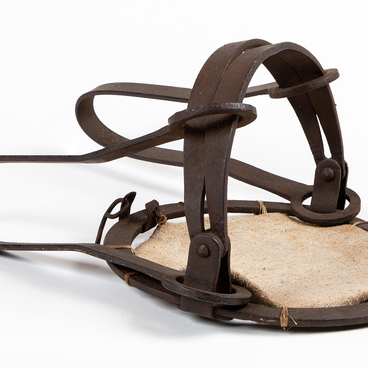The device for casting nets, featured in the collection of the Sheltozero Veps Ethnographic Museum named after Rurik Petrovich Lonin, was donated to the museum by a resident of the village of Sheltozero, Alexander Pavlovich Maksimov (1931–1996). He found the object on the site of the old barn of the Mankin house in the village of Kaskesruchey in 1989. Alexander Pavlovich Maksimov was the first head of the Sheltozero Veps Ethnographic Museum from 1980 to 1993, as well as one of the first teachers with higher education in the Veps region.
Fishing has been one of the main occupations of the Veps since ancient times. Nets were used to catch fish — the Veps knitted them themselves. It is known from the research of ethnographer Konstantin Kuzmich Loginov that the nets were woven from linen and hemp threads. There were two types of nets: stake and drift ones. Drift nets were used only on forest lakes and consisted of an upper string with birch bark floats impaled on it every 1–1.2 meters and a lower string, which was made of thick hemp rope. The rope got wet and dragged the lower end of the net along with it, spreading it out in the water. In the case of stake nets, floats were placed every 40–60 centimeters on the upper string, and birch bark or canvas bags with pebbles inside were sewn to the lower string. The length of the nets ranged from 12 to 30 meters.
The fisherman used a similar device for casting nets into the water when he was setting nets alone. People tried to check the nets daily. The fisherman went out on a boat alone or with a companion. The owner of the boat always boarded the boat first. The net was lifted from the water to the surface with a branch with one knot.
When fishing on forest lakes, fishermen turned to
the vodyanoy (the water spirit) for help. The Veps believed that every lake has
its own vodyanoy. In the popular imagination, the vodyanoy was most often
represented as a man. There was a whole set of rules of conduct in order not to
annoy the vodyanoy, for instance, it was forbidden to step on a stone covered
with mud. It was believed that this was the hair of a vodyanoy. It was not
allowed to swear at the reservoir, especially to scold a vodyanoy, otherwise a
fisherman could be left without a catch, unable to find the lake or be scared
by forest animals, and in the worst case, he could drown. People believed that
the vodyanoy did not like drunks. For a successful catch, the fisherman
mentally thanked the vodyanoy and left treats for him.


